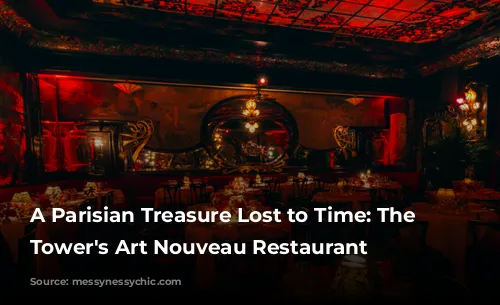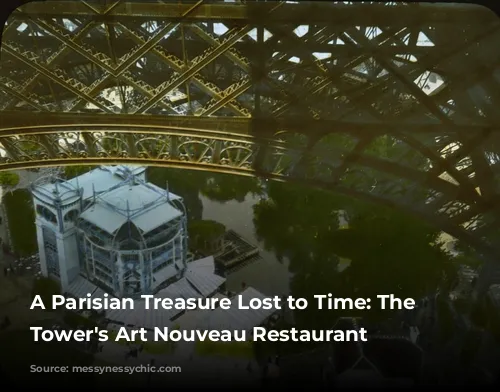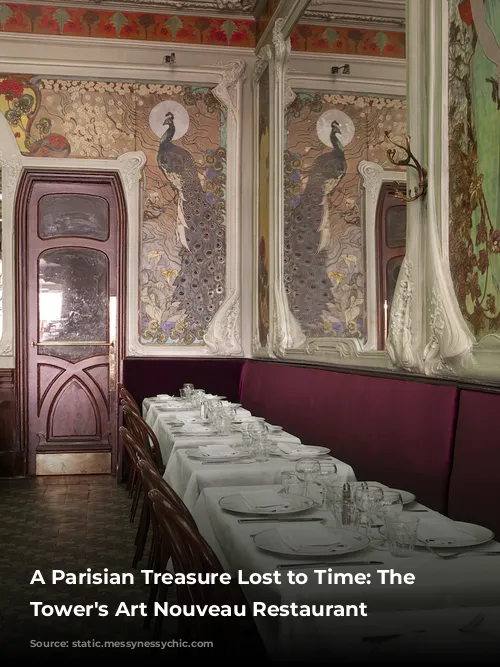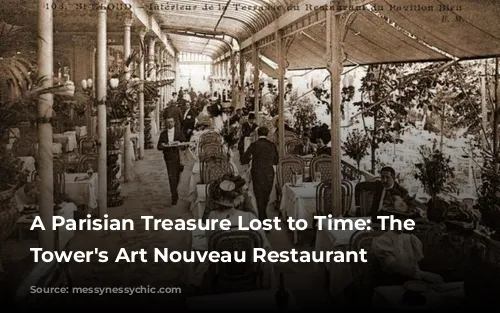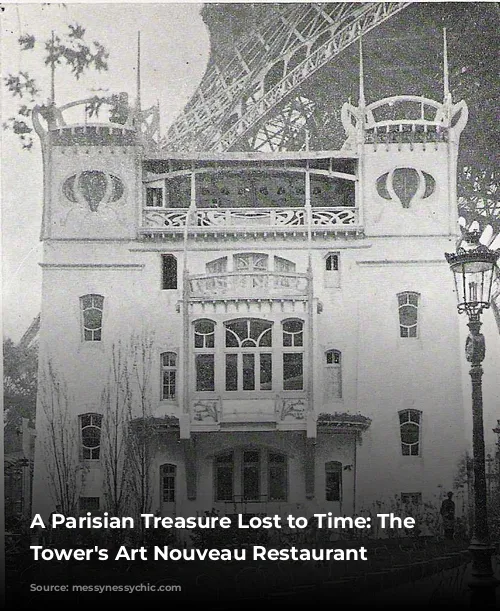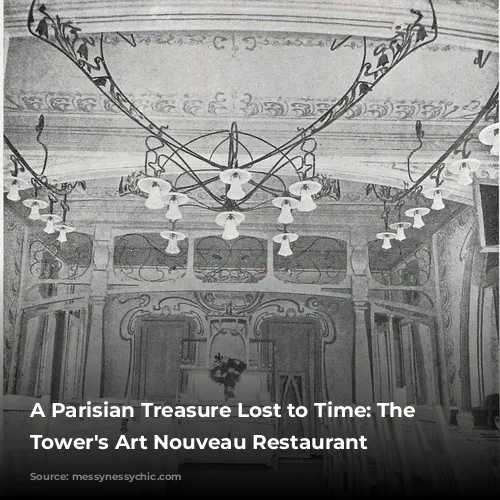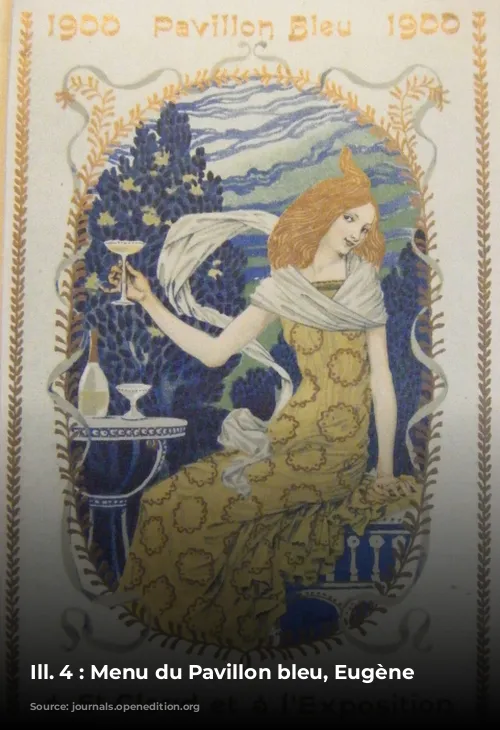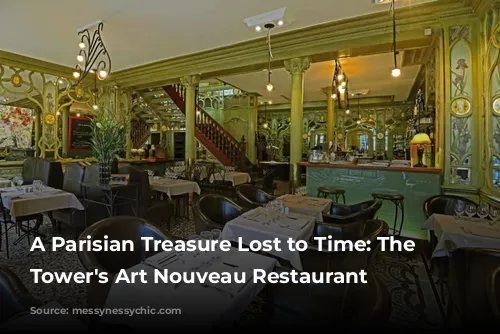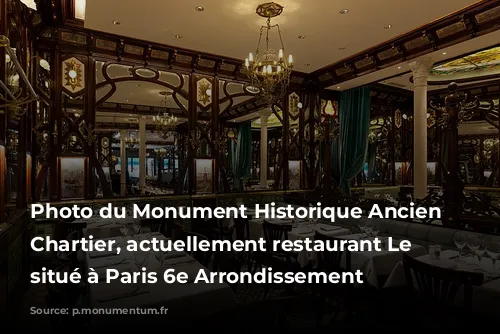Have you ever imagined dining under the Eiffel Tower in a lavish Art Nouveau restaurant? It might sound like something out of a dream, but this was once a reality! Back in 1900, a stunning restaurant called Le Pavillon Bleu graced the base of the iconic tower, offering a taste of the Belle Epoque and a glimpse into the captivating world of Art Nouveau.

A Feast for the Eyes
The Universal Exposition of 1900, a celebration of innovation and creativity, saw Paris embrace the Art Nouveau aesthetic. From the intricate designs of posters to the architecture of the fair’s pavilions, Art Nouveau was everywhere.
Le Pavillon Bleu was a true embodiment of this style, a visual masterpiece designed by the renowned architects René Dulong and Gustave Serrurier-Bovy. Its wooden facade, adorned with fanciful arches, ornate balconies, and tile friezes, was a testament to Serrurier-Bovy’s mastery of the Art Nouveau style.
The restaurant was painted in a striking blue and yellow palette, adding to its alluring charm. An artificial lake, reflecting the building’s colors, created an ethereal effect, making Le Pavillon Bleu appear like a floating Art Nouveau vessel.
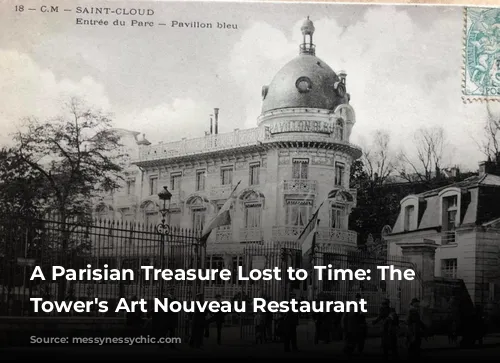
A Brief Encounter with Modernity
This unique restaurant, situated beneath the arches of the Eiffel Tower, was a hit with Parisians, who hailed it as the epitome of modernity. However, some conservative critics found its bold design excessive. Sadly, we only have one photograph of its interior, but it is safe to assume that the Art Nouveau fantasy continued inside, transforming the space with elaborate lighting fixtures, decorative wall panels, and exquisitely crafted furniture.
Despite its artistic brilliance, Le Pavillon Bleu faced challenges as a business and closed soon after the Exposition ended. The restaurant’s rise and fall remain a mystery, lost to the sands of time.
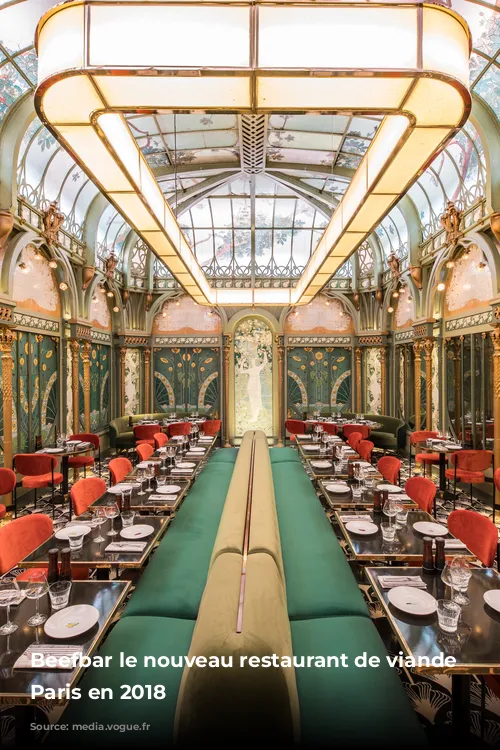
Echoes of the Past
While Le Pavillon Bleu may be gone, its Art Nouveau legacy lives on in other Parisian restaurants that have stood the test of time. These hidden gems offer a glimpse into the city’s rich history and architectural heritage:
-
Le Pré Catelan, a historic bistro nestled on Boulevard Saint-Germain, was saved from demolition in 1966 and has been designated a historic site. Its impeccable restoration allows visitors to experience the Art Nouveau era firsthand.
-
La Fermette Marbeuf, originally the dining room of the Hôtel Langham, was rediscovered after nearly 80 years of obscurity. This Belle Epoque restaurant, beautifully restored to its original glory, is a testament to the enduring beauty of Art Nouveau.
-
Le Bouillon Chartier, a landmark restaurant established in 1906, is steeped in Parisian history and boasts exquisite Art Nouveau decorations, including stained glass ceilings and captivating Mucha-esque murals.
-
Bouillon Racine, opened in 1906 by the Chartier brothers, is a celebrated brasserie that seamlessly blends its Belle Epoque charm with modern culinary delights.
-
Maxim’s, a Parisian institution since 1893, is a testament to the timeless elegance of Art Nouveau. Its stunning interior and impressive collection of 19th-century art and furniture transport visitors back to the era of Parisian glamour.
These Art Nouveau gems provide a glimpse into the past, allowing us to savor the beauty and sophistication of a bygone era. Each restaurant, with its unique story and historical significance, is a reminder of the enduring power of art and design.
